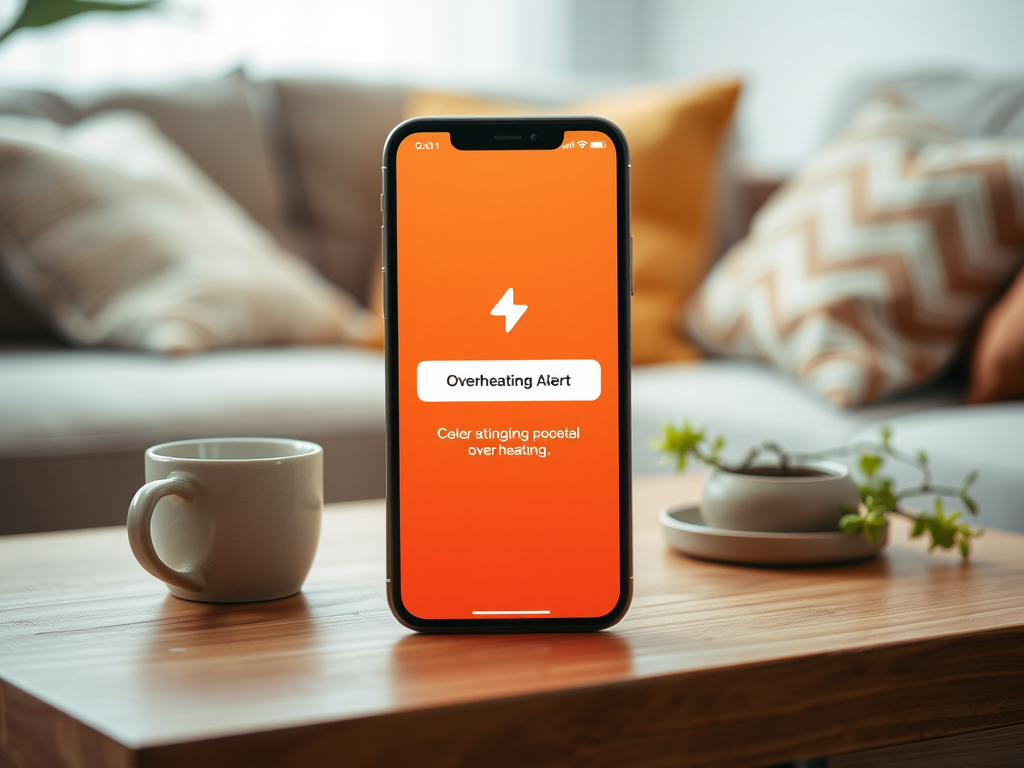In our fast-paced, technology-driven world, smartphones have become an essential part of our daily lives. However, with increased usage comes the inevitable challenge of device overheating. It’s not just an inconvenience; it raises crucial concerns about your phone’s health and longevity. When your device alerts you to an overheating situation, it’s crucial to understand what’s going on and how to respond promptly. This article delves into the intricacies behind overheating phone alerts, providing insights into their causes, responses, and prevention strategies to ensure your device remains in optimal condition.
Receiving an overheating alert is often accompanied by anxiety. With smartphones being a gateway to our personal and professional lives, any malfunction can feel overwhelming. That’s why knowing how to interpret these alerts is essential. Not only does it allow you to take appropriate actions, but it also empowers you to safeguard your data and maintain your phone’s performance. By the end of this article, you’ll be equipped with practical information to tackle overheating issues effectively.
Understanding Overheating Phone Alerts

Overheating phone alerts serve as a protective mechanism for your device. These notifications are engineered to prevent permanent damage by alerting you when your device reaches critical temperature levels. The smartphone’s internal sensors work diligently to monitor its temperature, and when they detect an increase that could potentially harm the hardware, they push out alerts. It’s an indication that your device is working too hard or is exposed to external conditions that aren’t conducive to optimal functioning.
Causes of Phone Overheating

Various factors can contribute to a phone overheating. Understanding these can help prevent future occurrences. Awareness of what causes overheating allows users to make informed decisions and avoid situations that could lead to damaging their devices.
- Intensive Applications: Running heavy apps like games, video editors, or streaming services can trigger an increase in temperature.
- Environmental Conditions: High ambient temperatures, direct sunlight, and high humidity levels adversely affect your phone’s ability to cool down.
- Battery Issues: A failing or damaged battery can generate excessive heat, leading to potential risks.
- Hardware Malfunctions: Defective components or dust buildup can obstruct proper ventilation, exacerbating overheating issues.
Identifying these causes is the first step toward prevention and effective management. Let’s take a deeper look at how you can manage overheating effectively.
How to Respond to Overheating Alerts
When you receive an overheating alert, it’s essential to take immediate action to protect your device. Refrigerating a phone might seem tempting, but this is not a feasible option. Instead, there are practical steps that can help mitigate the situation. By following a systematic approach, you can reduce the risk of permanent damage and prolong your device’s lifespan.
Immediate Steps to Take
- Close Applications: Exit any running apps to reduce the load on the CPU.
- Remove the Case: Taking the phone out of its protective case can enhance airflow and heat dissipation.
- Move to a Cooler Environment: Seek a shaded or air-conditioned area to allow your phone to cool down efficiently.
Implementing these steps can make a difference in mitigating heat. Furthermore, adopting long-term strategies can play a vital role in preventing future overheating incidents.
Long-Term Solutions
Consider these strategies to help keep your device cool:
- Regular Maintenance: Clean your device regularly to prevent dust build-up, especially around the vents.
- Update Software: Keeping your operating system and applications up-to-date can help improve device efficiency and reduce overheating.
- Avoid Overcharging: Unplug your phone once it reaches 100% to prevent overheating during charging cycles.
| Cause | Effect | Solution |
|---|---|---|
| Heavy App Usage | Increased CPU heat | Close apps, limit multitasking |
| High Environmental Temperature | Direct heat exposure | Stay in shaded areas |
| Battery Issues | Excessive heat generation | Seek professional help |
| Hardware Problems | Poor performance | Regular maintenance checks |
When to Seek Professional Help
If overheating persists, it may indicate a more serious issue that requires immediate attention. It’s crucial to recognize the signs that signify the need for professional help. Here are some indicators that should prompt you to contact a technician.
- Continuous Overheating: If alerts keep appearing despite following recommended steps, it may signal a deeper issue.
- Battery Swelling: A swollen battery can be dangerous and requires immediate attention.
- Performance Decline: Noticeable lag, freezing, or crashing can indicate internal problems needing expertise.
Conclusion
Overheating phone alerts are an essential feature designed to protect your device from damage. By understanding the underlying causes and knowing how to respond effectively, you can maintain your phone’s performance and longevity. The responsibility lies in the hands of the user to take proactive measures. Regular maintenance, being aware of environmental conditions, and utilizing the right technology can greatly extend the life of your device. Your smartphone is too valuable to neglect; adopting these strategies will ensure it stays by your side for years to come.
Frequently Asked Questions
- What should I do if my phone is overheating? Close all applications, remove its case, and let it cool down in a shaded place.
- Can I use my phone while it’s overheating? It’s best to avoid using your phone until it has cooled down to prevent further damage.
- How can I prevent my phone from overheating? Regularly clean your device, avoid high-temperature environments, and keep your software updated to maintain optimal performance.
- Is it dangerous for my phone to overheat? Yes, excessive heat can damage internal components and reduce battery lifespan.
- What if my phone continues to overheat even after following precautions? If the problem persists, consider seeking professional help for potential hardware or battery issues.
